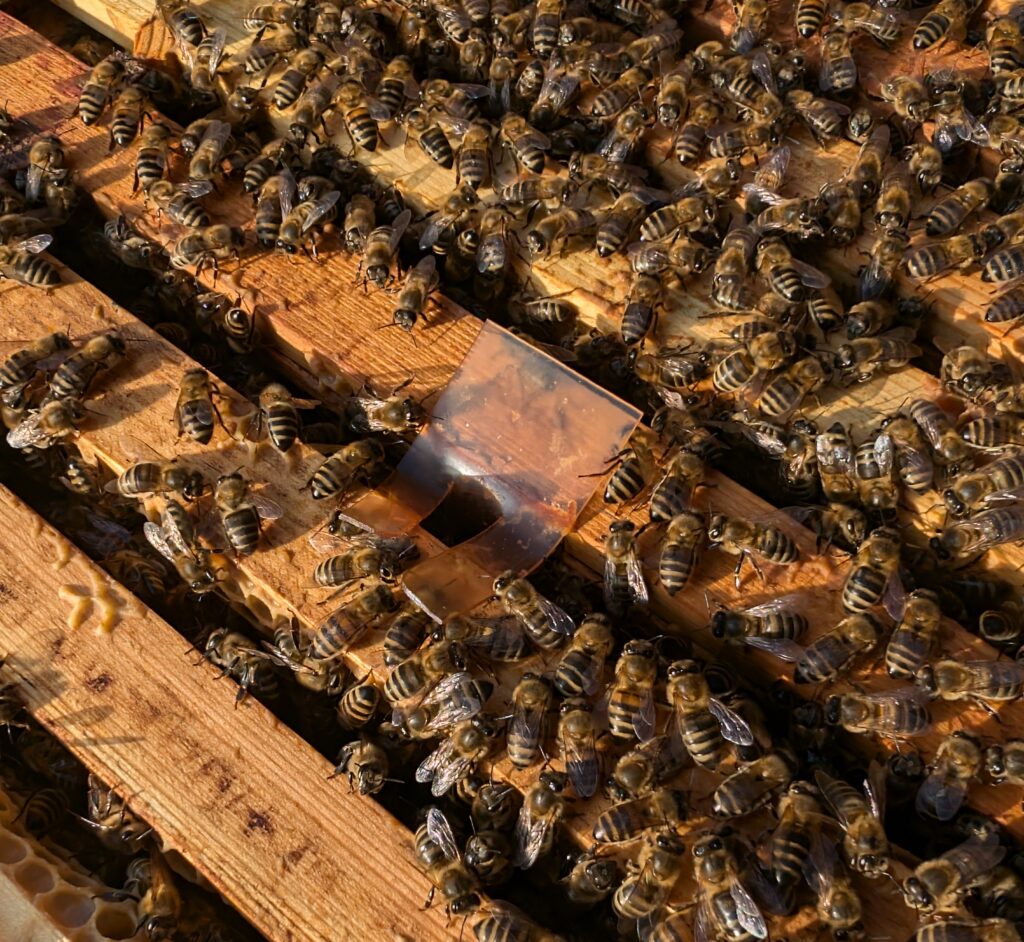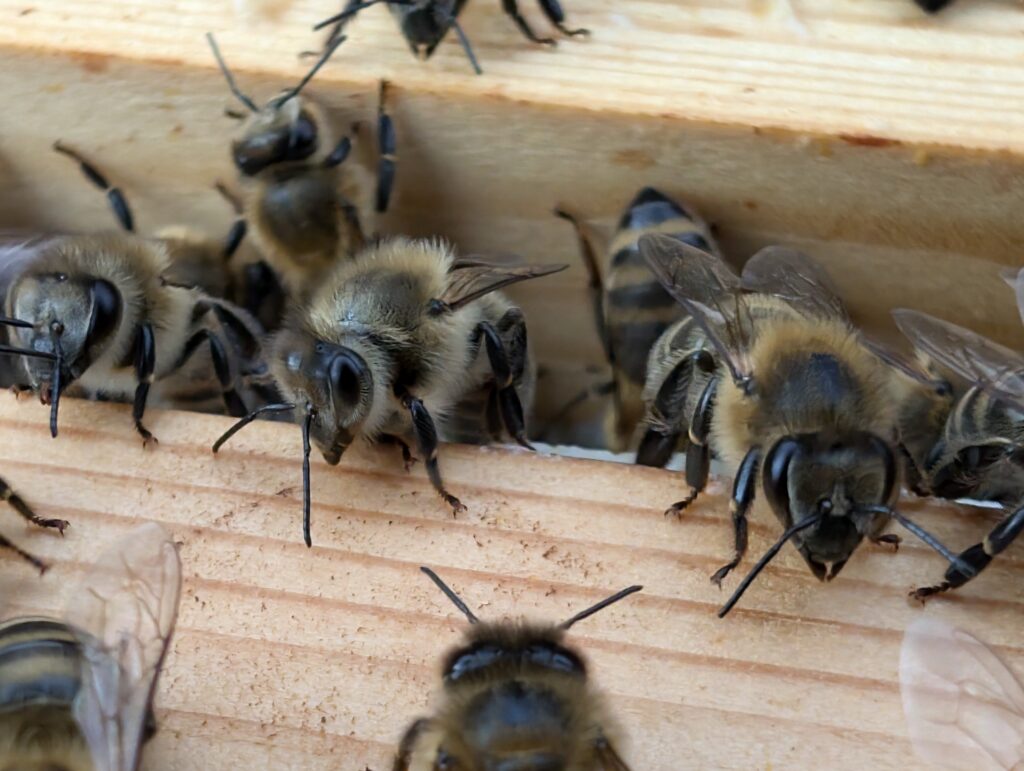Shhh! November is a quiet month for the bees. They need as much solitude as possible.
The focus of beekeepers in the autumn is to help their bees survive the winter. Matt had already made preparations, so November was mostly about keeping an eye on everything and adapting to the bees’ needs.
Pest Control
As the weather gets colder, mice will look for shelter. The hive is enclosed and snug, so would make an appealing home for a wandering mouse. One of Matt’s jobs is to check the mouse guard is still stalwartly securing the hive exclusively for the bees.

Another invader to the hive is the parasitic Varroa destructor. These mites are a potentially devastating threat to honey bees and must be taken seriously by beekeepers to ensure their colonies do not die.
This year, Matt used a chemical treatment called Apistan for the first time. The Apistan strips were due to be removed at the beginning of November after being left in place for the recommended six weeks. Seeing the vast number of dead mites, Matt can say the treatment was extremely effective! However, he won’t be able to use the strips again any time soon because the Varroa destructor quickly builds up resistance to synthetic treatment methods. Next year, Matt will return to the natural Apiguard gel. Thankfully, there are no reports of mites becoming resistant to organic treatments.

Food Stores
The first time Matt visited the hives happened to be an unusually warm November day, so he was greeted with cheerful and lively bees! Matt spotted bright yellow pollen on some of them. He thinks they must have gathered it from autumn-flowering ivy. Clearly his bees are workaholics, taking every opportunity they can to forage for food.
But it seems their work ethic gives them a hearty appetite. Matt discovered his bees had consumed ALL – over 3kg – of the fondant he left for them at the end of October. So, on his next visit he brought 5kg of fondant to divide between the two colonies.

Matt’s hives are currently in their winter configuration, which has a nadired super. What on earth does that mean? Good question. In the warmer months, brood boxes where the queen bee lays her eggs go at the bottom, and super boxes where honey is stored go at the top. In winter, one super can be placed at the bottom, and this is known as nadiring.
On the warm day in early November, Matt took advantage of the good mood the bees were in to look over the food stores in these nadired supers at the very bottom of the hives. Bees consume honey from the bottom of the hive first, so this is where Matt found empty frames. He replaced these empty frames of honey with full ones and noted that the bees had got through more of their reserves than he’d expected.
As a devoted bee-lover, Matt wants to be certain both his colonies have enough food to last them the winter, so he will channel his inner Santa Claus and keep delivering sugary treats if the bees keep eating them. Is this a good idea? Will the bees eat too much and get fat? It is indeed a good idea and overweight bees are not a thing. Bees feed only when they need the nourishment, so if they’re getting through the fondant it means they genuinely need it.
Naturally, opening up the hive should only be done when it’s warm and the bees aren’t grouchy. But, if there is another oddly warm day, Matt will give the bees some frames of honey he’s got stashed in the freezer instead of more fondant. Why are there frames of honey in the freezer? If you’ve read the post ‘What is honey?‘ you’ll know that honey is a non-perishable food, so it seems pointless to freeze it. Does Matt just not have enough cupboard space? Nope! It’s because there is yet another pest threat to bees, as if mice and mites aren’t enough! The wax moth can cause a multitude of problems for honey bees, including eating their food and preventing grown bees from emerging from their hexagonal-shaped egg cell. By storing honey frames in the freezer, it kills any wax moth larvae that may have been lurking.

Warmth
The population of a colony of bees changes throughout the year. There are different summer bees and winter bees. In one of Matt’s two hives, the queen stopped laying eggs earlier, meaning the summer bees died off sooner, leaving only winter bees living there. So, Matt made the decision to remove an empty super. Supers are wooden boxes that can be added to a hive to give the bees more space. For this colony, the hive was overly spacious and would have required a lot of effort from the bees to keep warm, so a smaller house will be much cosier for them.
The other way Matt can help his bees to stay warm is to leave them be as much as possible. Imagine you’re all toasty indoors, looking through the window, admiring the snowfall and the glisten of frost on the ground, while sitting by a crackling fire with a hot drink. Now imagine someone yanks off the roof over your head! The chill hits instantaneously, doesn’t it? Brrr! So, once the weather turns cold, it’s always best for beekeepers to resist the urge to interfere with the hives of their honey bees.


Keeping bees is far more complicated than I ever knew. It has been very interesting reading about them